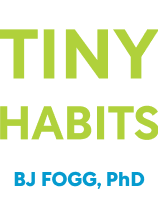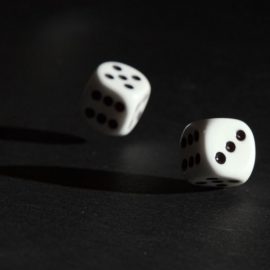

This article is an excerpt from the Shortform book guide to "Tiny Habits" by BJ Fogg. Shortform has the world's best summaries and analyses of books you should be reading.
Like this article? Sign up for a free trial here .
If you have the motivation to change a habit, then why is still so difficult? How can the motivation graph from Tiny Habits help you move past the action line and form a habit?
The motivation graph in this article is a visual representation of why it sometimes seems impossible to break a bad habit or form a better, positive one. When a task is difficult, there are a few methods to move beyond the action line and get it done.
Continue below for an explanation of the motivation graph.
The Motivation Graph: Explained
By looking at the “Action Line,” on the motivation graph, we can work out whether or not a behavior will be performed.
Let’s plot Motivation and Ability as the axes on a graph. The Action Line is a curve marking the threshold at which an action will be performed.
In this graph, the blue star is a behavior that’s very easy to do and for which you have a moderate level of motivation. It sits far above the action line, so when you’re exposed to the prompt you’ll have no problems doing this behavior. The green star is a behavior that’s much more difficult. Though you have almost as much motivation as for the blue star behavior, the high level of difficulty means that even with a well-designed prompt you won’t get above the Action Line and manage to do the behavior.
How to Move Beyond the Action Line
Ability and Motivation are complementary. If you have more ability (or if the action is easier), you need less motivation to get over the Action Line. If you have less ability, you’ll need more motivation to get over the Action Line. This is why if you’re extremely motivated to do something but the activity is very difficult (such as lifting a car to save someone pinned underneath), you still have a chance of getting over the Action Line.
If a behavior is currently below the Action Line, how can you lift it above the curve? You can target any of M (Motivation), A (Action), or P (Prompt).
If motivation isn’t going to change, target A or P.
For example, housework in a shared household is a common point of contention. Here’s one problem that arose in Dr. BJ Fogg’s household. His partner wanted him to wipe down the shower every time he used it, but the habit just wasn’t sticking.
Fogg analyzed M, A, and P. There was motivation (a shared desire for a clean shower) and a clear prompt (turning off the water), but the behavior wasn’t happening. Why? He realized that he simply didn’t understand what “wipe down” meant in this context. With what? How?
So he asked his partner to show him how to do it. After his partner had demonstrated exactly what to do, Fogg’s ability increased, pushing the behavior over the Action Line.
Applying the Concepts
The Fogg Behavior Model is about design, not about character judgment. Notice that there’s no “self-discipline” or “moral fortitude” axis.
Example: Katie’s social media habit
We can see the Action Line at work in the situation of Katie, a successful executive. Katie had one troublesome habit that consistently fell above the Action Line: scrolling through social media on her phone after her alarm went off at 4:30 am, not leaving her enough time to go to the gym.
To conquer this social media habit, Katie examined M, A, and P in turn.
* Her motivation was to stay in touch with family and friends. Knowing that this motivation would be hard to change, she moved on to Ability.
* Scrolling through social media in bed is incredibly easy, so there were opportunities here to make it harder. Katie experimented with several options, eventually finding that keeping her phone in the kitchen overnight made the behavior hard enough that she wasn’t tempted.
* As the prompt for this behavior was the phone itself, putting the phone in the kitchen also removed the prompt. Katie bought an alarm clock for her bedroom, which woke her up without the temptation of social media.
After this adjustment, Katie successfully banished the bad habit and started going to the gym immediately after she woke up.
Katie’s experience exemplifies many of the specific Behavior Design techniques.

———End of Preview———
Like what you just read? Read the rest of the world's best book summary and analysis of BJ Fogg's "Tiny Habits" at Shortform .
Here's what you'll find in our full Tiny Habits summary :
- How you can successfully create new habits that stick
- Why you don't need motivation, just science
- Why even flossing one tooth should be considered a victory






